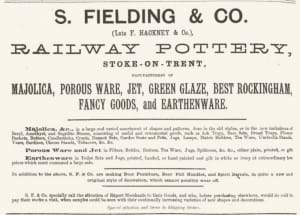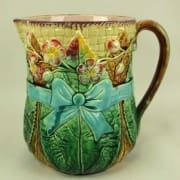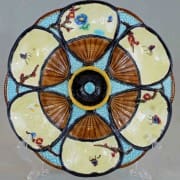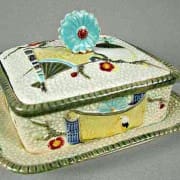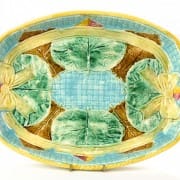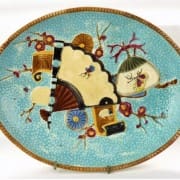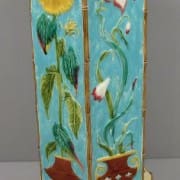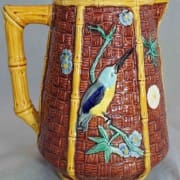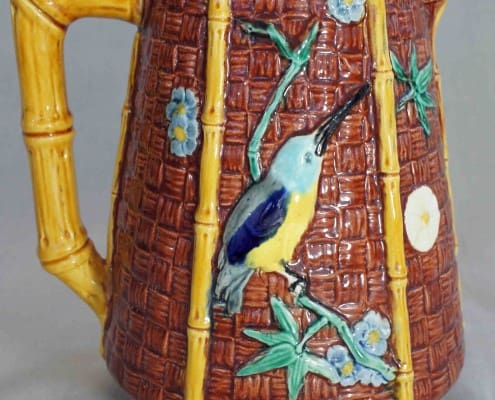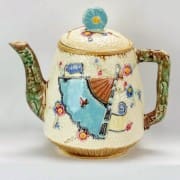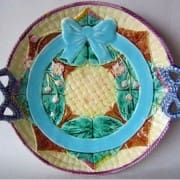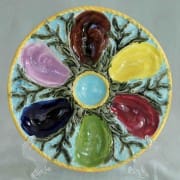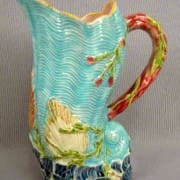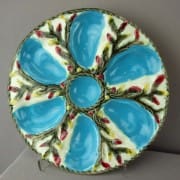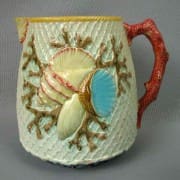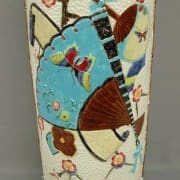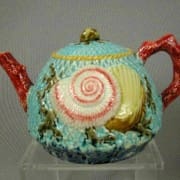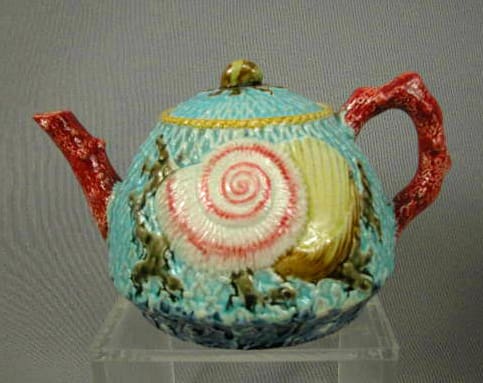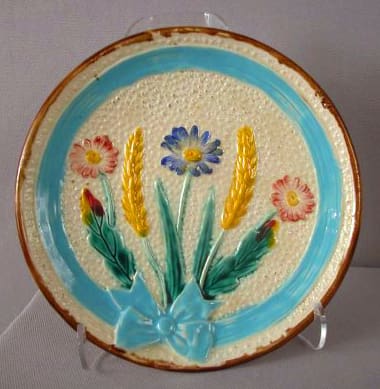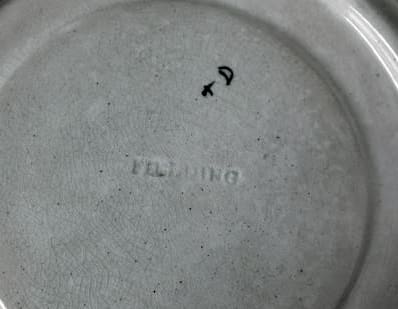Simon Fielding
Simon Fielding established himself at the Railway Pottery on Sutherland Street in Stoke-on-Trent in 1870. Not a potter by trade, Fielding had been a judge of poultry and dogs to the Duke of Sutherland at Trentham Hall. The pottery faltered financially until Fielding’s son Abraham assumed management in 1878. Abraham had apprenticed at the Blythe Color Works in Cresswell and was well suited to the task of majolica production.
By 1880, Fielding had begun producing argenta wares with textured backgrounds, building on the success of Wedgwood’s argenta patterns. Popular patterns included Shell and Net, Bow and Floral, Fan and Insect, and Fan and Scroll. Fielding’s many fan patterns have a distinctive oriental influence and were uniformly well modeled. Majolica production effectively ended by 1890, but the firm continued ceramic production under the name Crown Devon and remained in family control well into the twentieth century. The Railway works and buildings of the Crown Devon Pottery were demolished in 1987.
Fielding majolica is often marked FIELDING in faint, small letters and may be accompanied by a British Registry Mark.
External Links:
Photo Credits: Strawser Auctions Live Auctioneers Ebay images Madelena Antiques Antiques from Trilogy Philppe Meunier & Juan-Alonso Defrocourt Karmason Library


